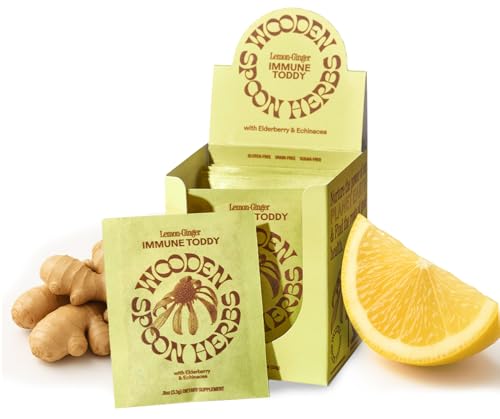Echinacea
Overview
Echinacea is a genus of herbaceous flowering plants (family Asteraceae) native to North America, most commonly cultivated as Echinacea purpurata, E. angustifolia and E. pallida. The roots, aerial parts, and sometimes the whole plant are used in dietary supplements primarily to modulate immune function and to support the body’s response to acute respiratory infections.
Benefits
- Upper‑respiratory‑tract infection (URTI) prevention and reduction of symptom severity: Meta‑analyses of randomized controlled trials (RCTs) show a modest (~15‑20 %) reduction in incidence and a shortened duration of colds when standardized extracts (≥ 4 mg alkylamides) are taken at symptom onset.
- Immune‑modulatory support: In vitro and human studies demonstrate increased phagocytic activity of neutrophils and up‑regulation of cytokines (IL‑1β, TNF‑α) without causing systemic inflammation.
- Anti‑inflammatory and antioxidant activity: Echinacea extracts reduce oxidative markers (e.g., malondialdehyde) in exercise‑induced stress models and may aid recovery after intense physical activity.
- Potential adjunct in cancer‑related fatigue: Small RCTs in breast‑cancer survivors reported modest improvements in fatigue scores when a standardized E. angustifolia extract was taken for 8 weeks, though data remain limited.
- Skin‑healing support: Topical formulations containing Echinacea have shown accelerated wound closure and reduced erythema in controlled trials, attributed to its anti‑inflammatory and collagen‑stimulating properties.
How It Works
- Pharmacology: Echinacea’s pharmacology is driven largely by its phenolic compounds (caffeic‑acid derivatives such as cichoric acid), polysaccharides, and alkylamide constituents.
- Alkylamides: Alkylamides act as agonists of the cannabinoid‑type 2 (CB₂) receptor, which modulates immune‑cell migration and cytokine production.
- Polysaccharides: Polysaccharides (e.g., arabinogalactans) bind to Toll‑like receptor 2 (TLR‑2) and TLR‑4 on macrophages and dendritic cells, triggering NF‑κB activation and a transient rise in pro‑inflammatory cytokines that prime the innate immune response.
- Phenolics: Cichoric and other phenolics exhibit strong free‑radical scavenging via electron donation, protecting cellular membranes from oxidative damage.
- Combined Effect: The combined effect results in enhanced phagocytosis, increased natural‑killer‑cell activity, and a balanced, non‑excessive inflammatory response, which underlies the observed clinical benefits in infection and inflammation models.
Dosage
- Standardized root extracts (≥ 4 % total alkylamides): 300 mg to 500 mg taken 2–3 times daily (≈ 0.5–1 g of dried root equivalent) for prophylactic use during cold‑season, typically for 8–12 weeks.
- Acute‑illness protocol: 900 mg total (three 300 mg doses) at the first sign of a URTI, then 300 mg every 6 h for 3‑5 days.
- Liquid tincture: 2–4 mL (≈ 400 mg root equivalent) 3‑times daily, titrated down after symptom resolution.
- Topical preparations: 0.5–1 % (w/w) creams or gels applied 2‑3 times daily to minor cuts or skin irritations.
- Special considerations: Athletes using high‑intensity training may use 500 mg twice daily for 2 weeks post‑exercise to aid recovery. Pregnant or lactating individuals, and those on immunosuppressive therapy, should consult a clinician before initiating.
Safety & Side Effects
- General Tolerance: Echinacea is generally well‑tolerated; reported adverse events are mild.
- Adverse Events: Mild adverse events include gastrointestinal upset (nausea, abdominal cramps) and, rarely, allergic dermatitis (especially in individuals with known Asteraceae sensitivity).
- Contraindications:
- Autoimmune disorders (e.g., lupus, rheumatoid arthritis) – potential exacerbation of immune activation.
- Organ transplant recipients – possible interference with immunosuppressants.
- Drug Interactions: Moderate induction of CYP3A4 may reduce plasma concentrations of certain benzodiazepines, antiretrovirals, and statins; concurrent use with immunosuppressants (e.g., cyclosporine) may increase infection risk.
- Populations to Avoid or Use Under Medical Supervision: Pregnant or nursing women, children < 2 years, and individuals receiving chemotherapy or high‑dose steroids.
Chemistry
- Alkylamides: e.g., N‑(2‑methylbutyl)‑2‑(3‑hydroxy‑4‑methoxyphenyl)‑prop‑2‑enamide (C₁₈H₂₅NO₃, MW 295.4 g mol⁻¹) with a characteristic amide‑linked unsaturated carbon chain.
- Caffeic‑acid derivatives: cichoric acid (C₁₈H₁₆O₉, MW 354.31 g mol⁻¹) with a central quinic acid core esterified to two caffeic acid moieties, providing multiple phenolic hydroxyl groups.
- Polysaccharides: high‑molecular‑weight arabinogalactans (≈ 10–100 kDa) rich in β‑1,3/β‑1,6‑linked galactose residues.
- Other Constituents: The overall plant matrix contains flavonoids (e.g., luteolin‑7‑glucoside), sesquiterpene lactones (e.g., echinacoside), and a complex mixture of glycosides.
- Quantification: These constituents are typically quantified by HPLC‑UV or LC‑MS, with standards expressed as % alkylamides or % cichoric acid.
Sources & Quality
- Cultivation: Commercial Echinacea is cultivated primarily in the United States (North Dakota, Minnesota) and Canada, where E. purpurata and E. angustifolia are grown under Good Agricultural and Collection Practices (GACP).
- Harvesting: Harvesting occurs at the flowering stage for aerial parts or after 2–3 years for root material.
- Extraction Methods:
- Ethanol‑water (30 %–70 %) extraction: for alkylamide‑rich root extracts.
- Aqueous‑ethanol extraction: for cichoric‑rich aerial‑part extracts.
- Super‑critical CO₂: for lipophilic alkylamides with minimal solvent residues.
- Quality Assurance: Quality assurance hinges on standardized alkylamide content (≥ 4 % total) and low microbial/metal contamination, verified by USP or EFSA monographs.
- Recommendations: Third‑party testing (e.g., USP‑verified, NSF Certified) is recommended to ensure consistency and safety.
Where to Buy Echinacea





Affiliate Disclosure: We earn a commission if you purchase through these links at no additional cost to you. This helps us maintain our research and provides you with the best supplement information.